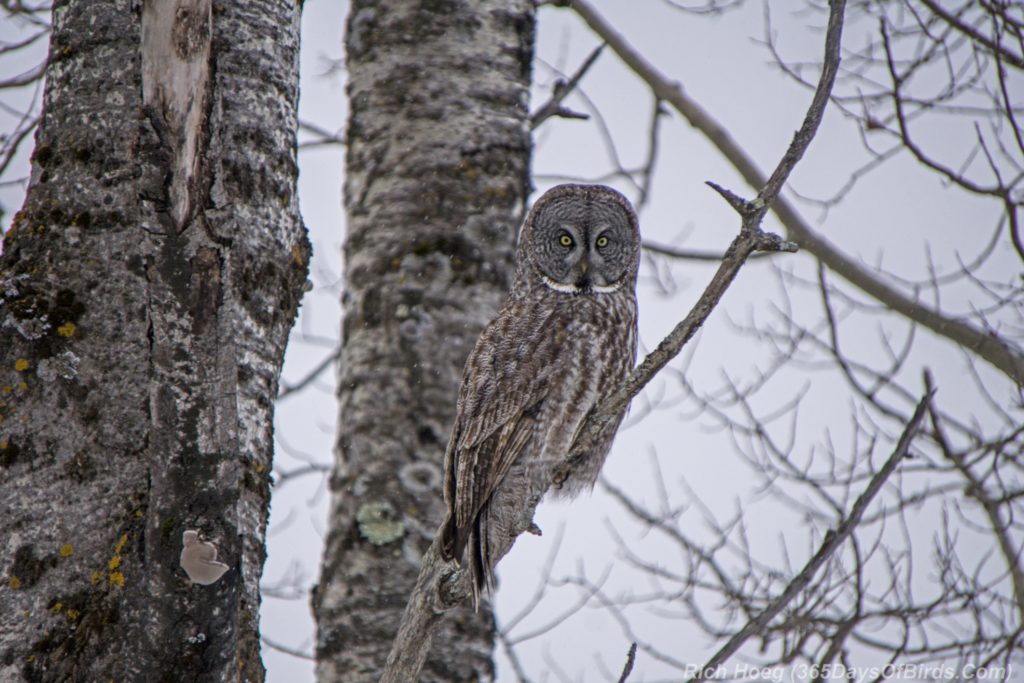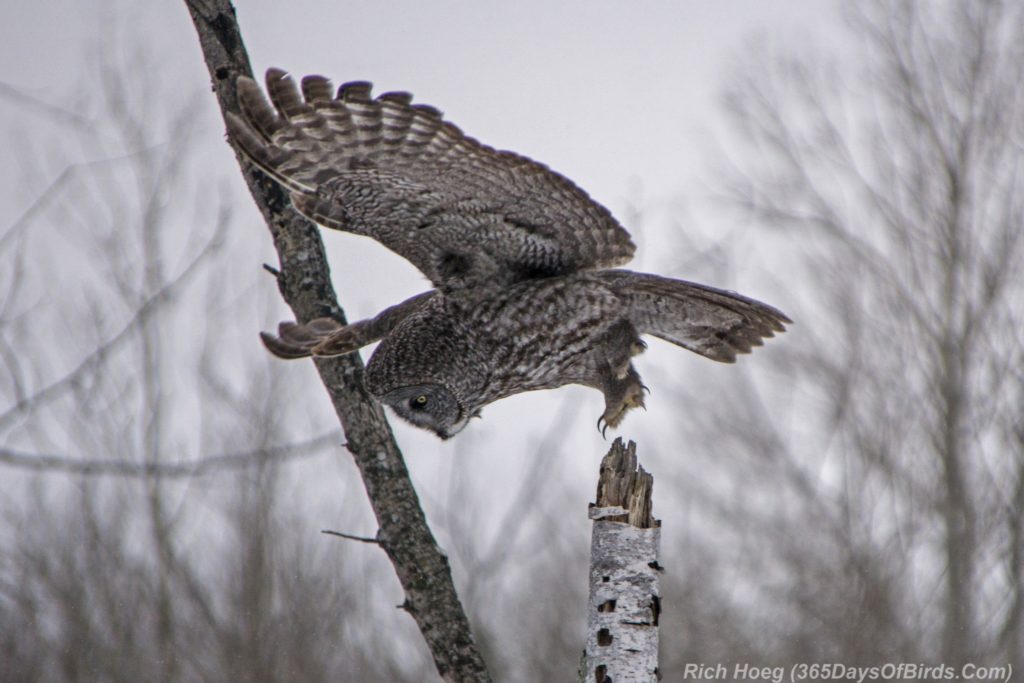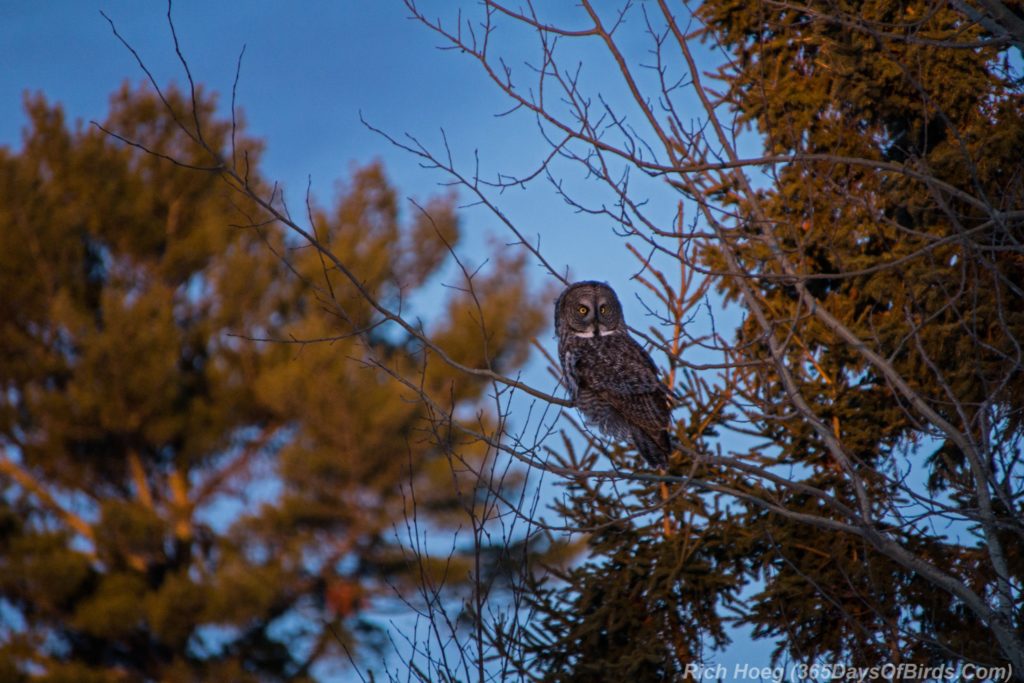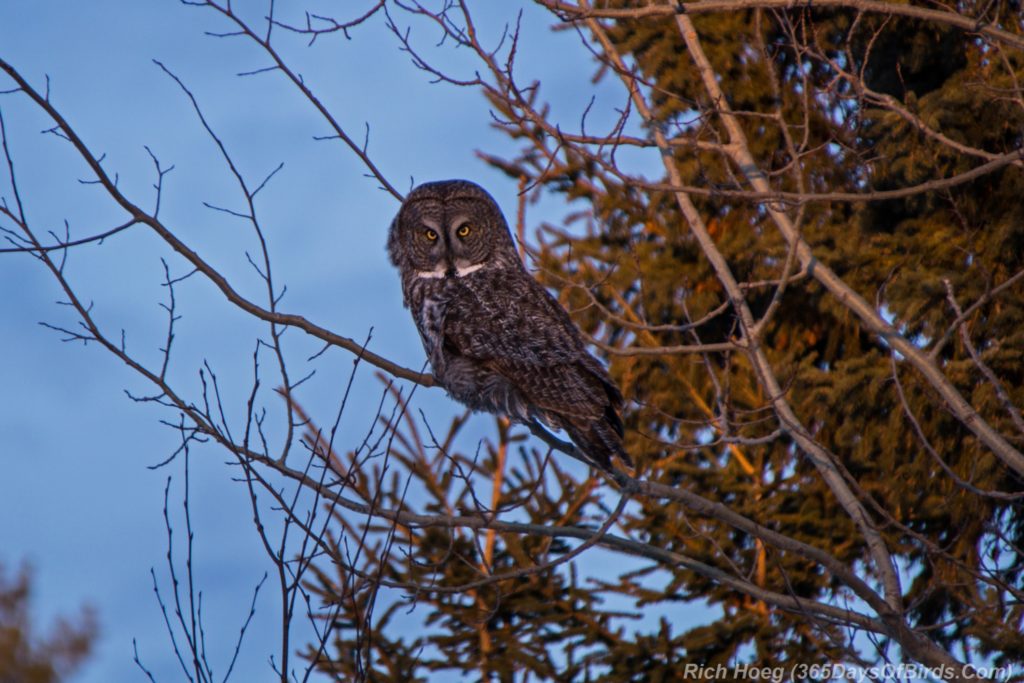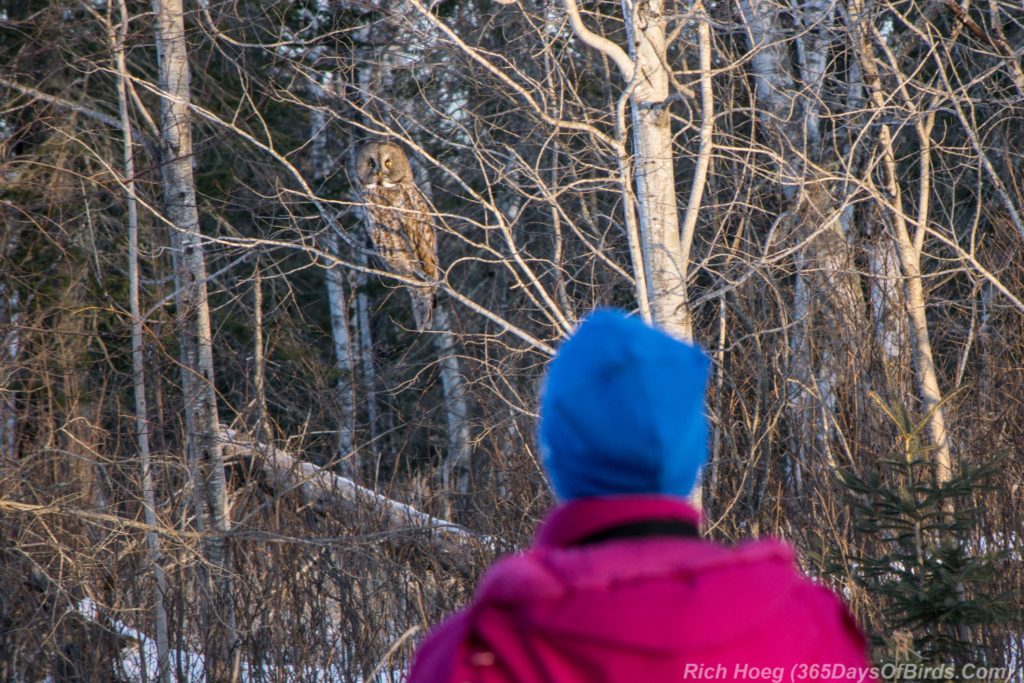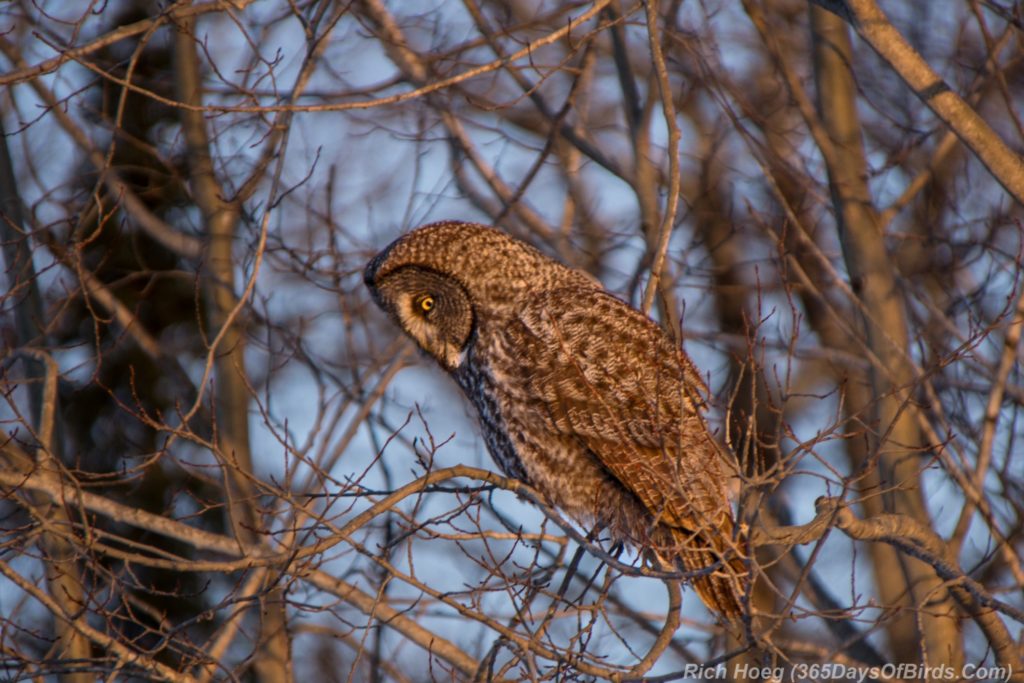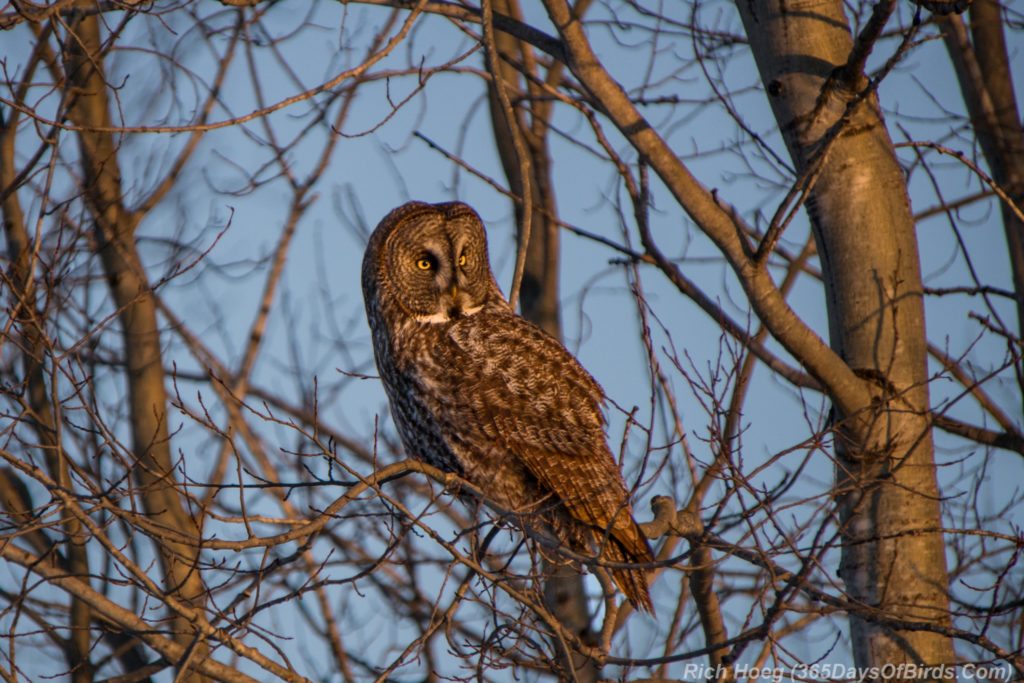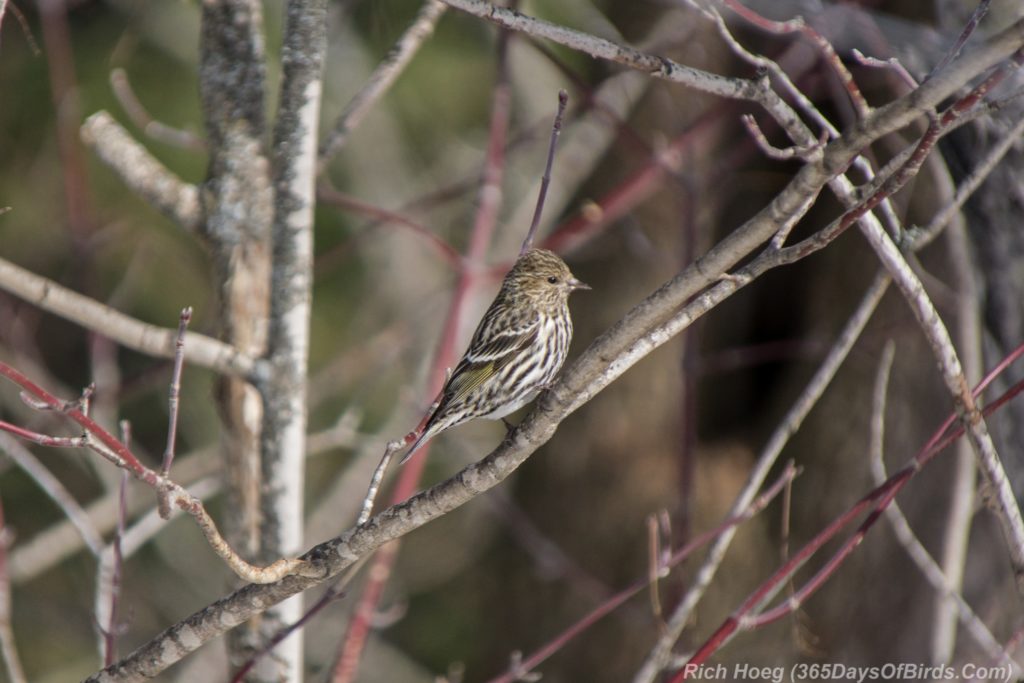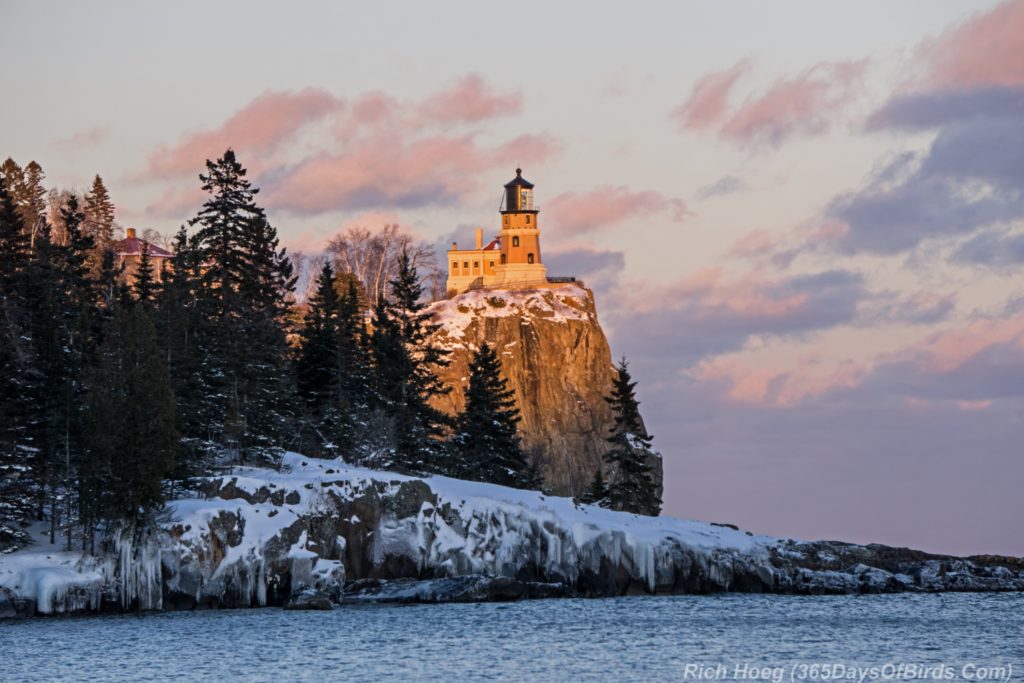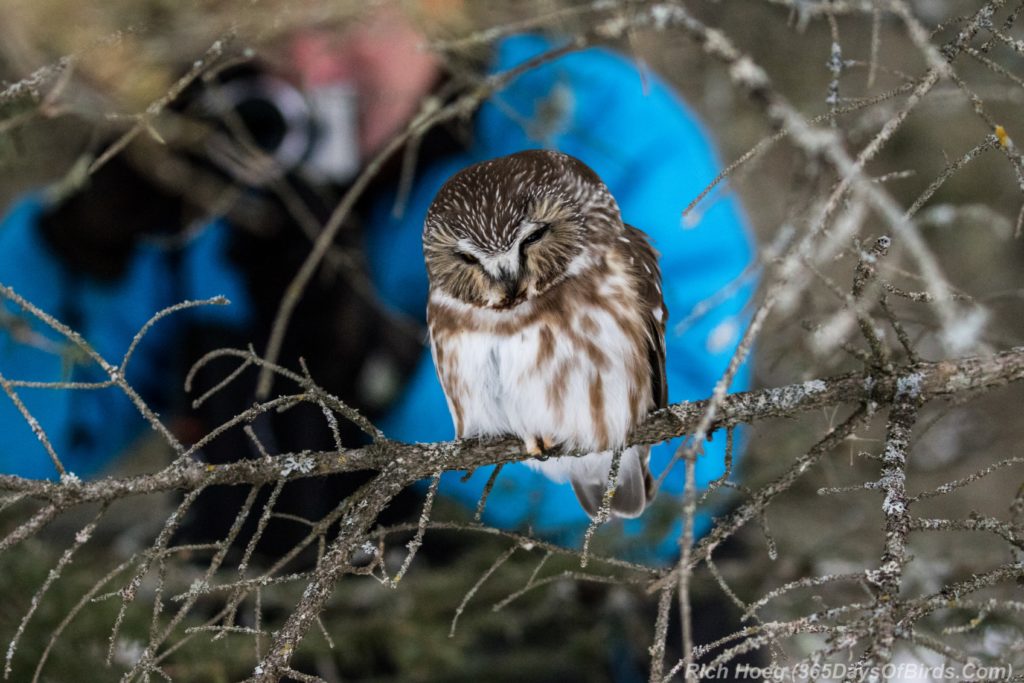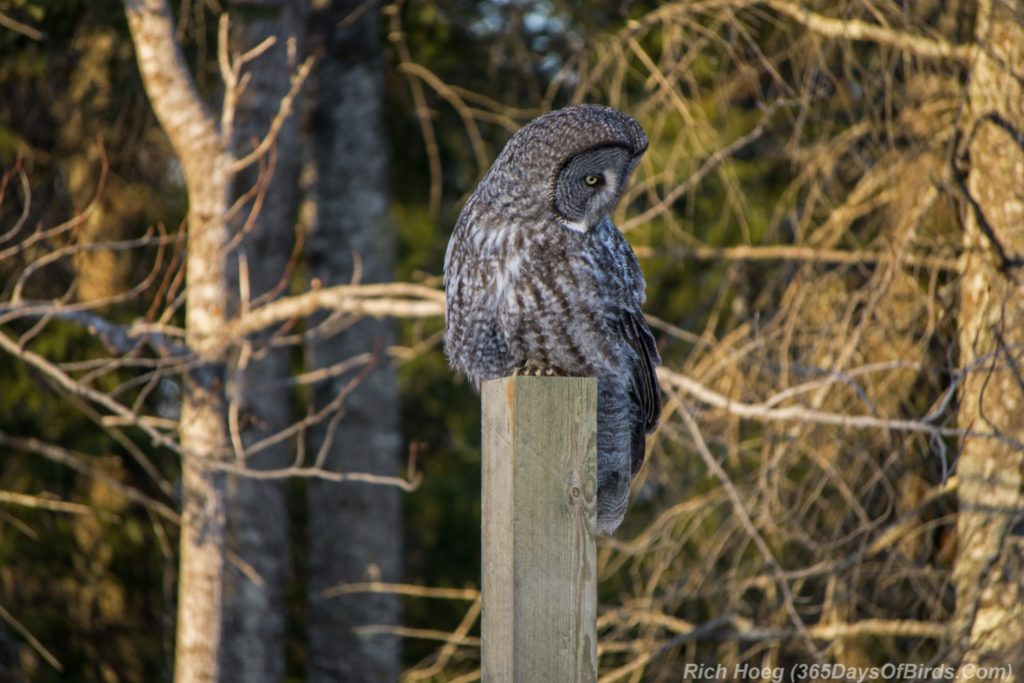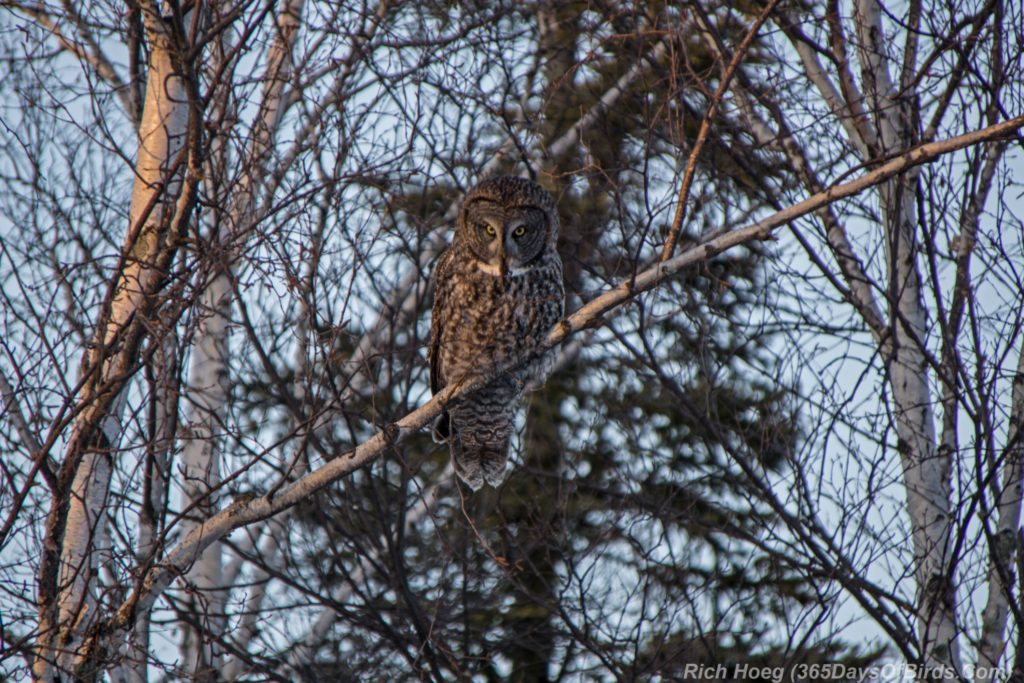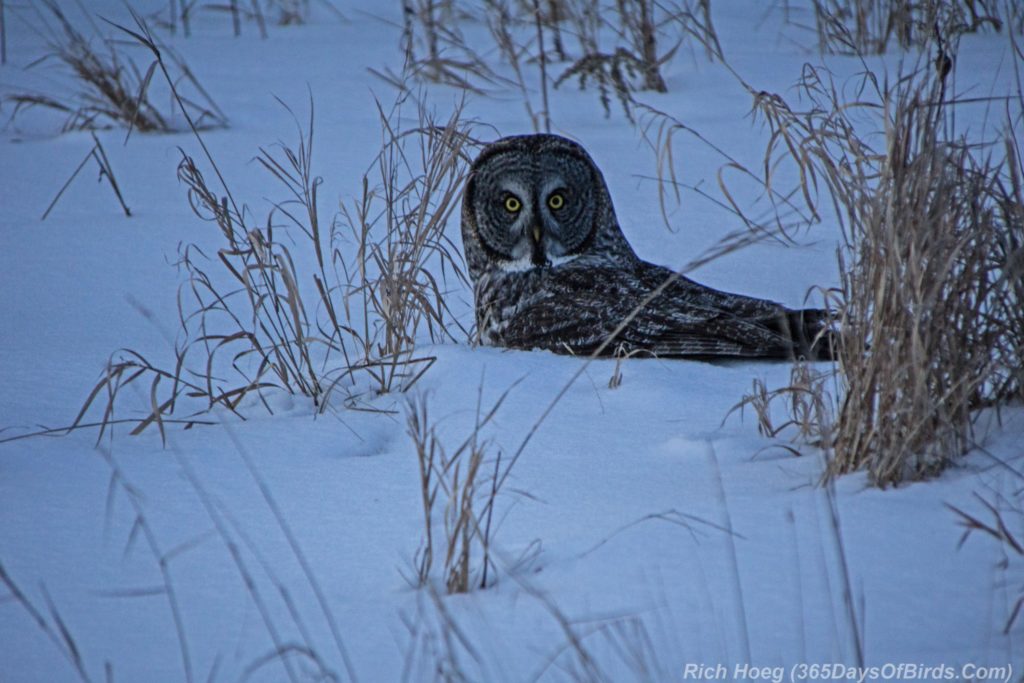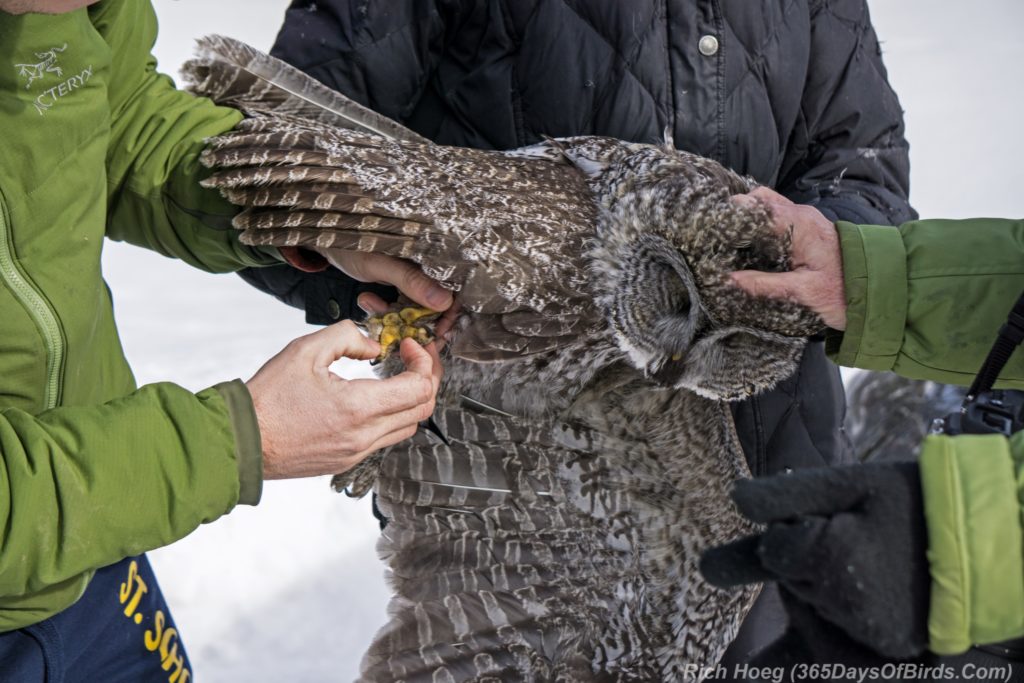Yesterday evening I finally captured a good photograph of a Great Gray Owl hunting. Over the past two weeks, I have hiked many miles of trails, driven many back roads and watched an incredible number of owls in my quest to get some good images of the “gray ghost of the forest” while it was hunting. Here is the result of the quest!
From this point on I want to take a different tack with this post. Why has it been so difficult for me, a decent wildlife photographer, to obtain a hunting photo? Perhaps because I refuse to bait owls with pet shop mice?
Have you ever seen a dramatic photograph of an owl reaching with its talons to grab a mouse or a vole? While the image may not involve baiting, please consider that Great Gray Owls hunt by hearing their prey beneath the snow. Mice and voles normally do not run on top of the snow. With their phenomenal hearing, these owls triangulate their prey, strike and punch through the snow. In addition, while watching owls hunt I can personally attest that the habitat in which you find Great Grays normally has “meadow like” sections, but there are always trees, snags, brush and other stuff which often prevents a straight line of sight to where the owl ultimately strikes the snow in search of its prey. After all, an owl sitting on top of a tree while hunting may fly in any direction. If you doubt that fact, find yourself an owl, and watch how it turns its head almost 180 degrees from the way it is facing. Are you are able to predict in which direction will be its next flight?
My friend, Michael Furtman, who is a great outdoor photographer and author has been writing a series of Facebook posts on the issue of owl baiting. For those of you not familiar with the issue, photographers w/o any conservation morals purchase pet shop mice and set up each photograph. In short, they sacrifice a life for every photograph in their quest for the perfect raptor hunting image. In addition the owl gets accustomed to humans which is dangerous. These are wild creatures which need to survive in the wild. Associating humans with food is dangerous for them. If you want to do some follow-up research on the subject of owl baiting, browse to these sources.
- Audubon’s View on Owl Baiting
- Mike Furtman’s Facebook Page
- Keith Crowley’s: Of Mice and Men
Now back to yesterday afternoon and my quest to capture a good Great Gray Owl hunting image. Notice how my photo given above was not taken on a bright sunny day. Owls hate bright light (sunny days) and high winds. These birds are nocturnal and hunt by hearing their prey (windy conditions make it hard to hear mice or voles). Thus, yesterday afternoon was perfect for owling … light snow, darker skies and calm winds. From a photography vantage point the conditions were horrible. A baiter would want to find an owl on a bright sunny day, and lure it out of its deep cover with pet shop mice because of the perfect photographic conditions.
In total I spent almost 2 and 1/2 hours with this particular owl yesterday, both in the early morning and late afternoon. This owl was not a “roadside owl” which folks are able to photograph from their cars. Instead I had hiked deep into the forest to good habitat, and found a cooperative owl. Not once did this owl flush due to my presence. I kept my distance and let the bird hunt.
Here are some of my “failure photos” and two images which show the habitat in which the owl was hunting. These pictures are as important as my success image for demonstrating why I often find the perfect owl pictures suspect.
Yesterday’s Owl Habitat on the Ground. My owl captured a vole with this strike, but it was impossible for me to get a clean photograph. I was slogging through knee deep snow, and obviously had no idea where voles were running underneath the snow.
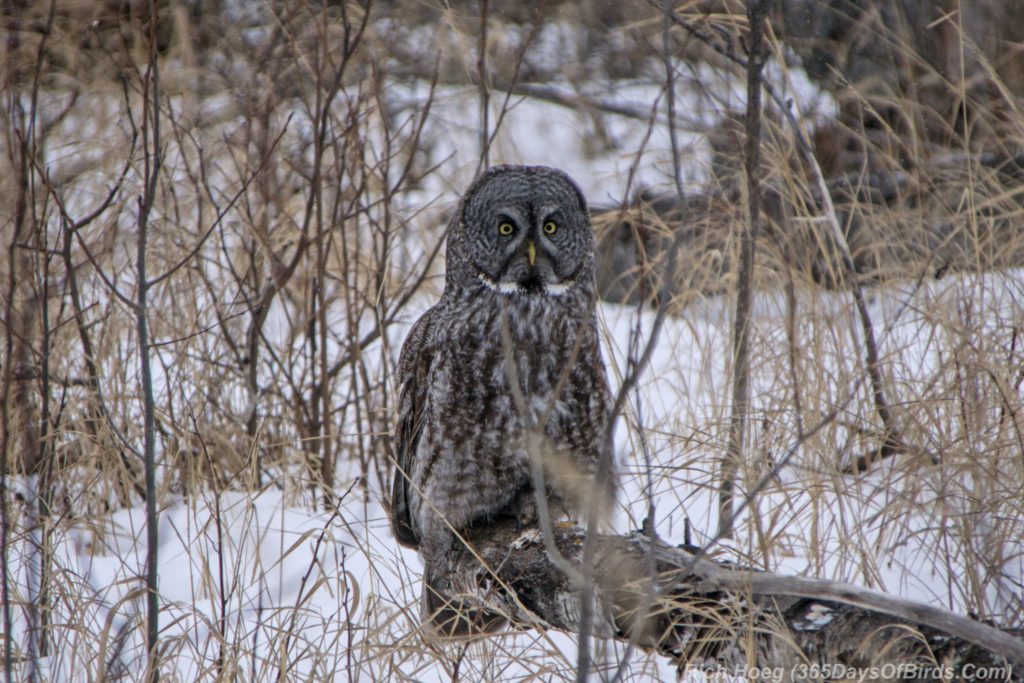
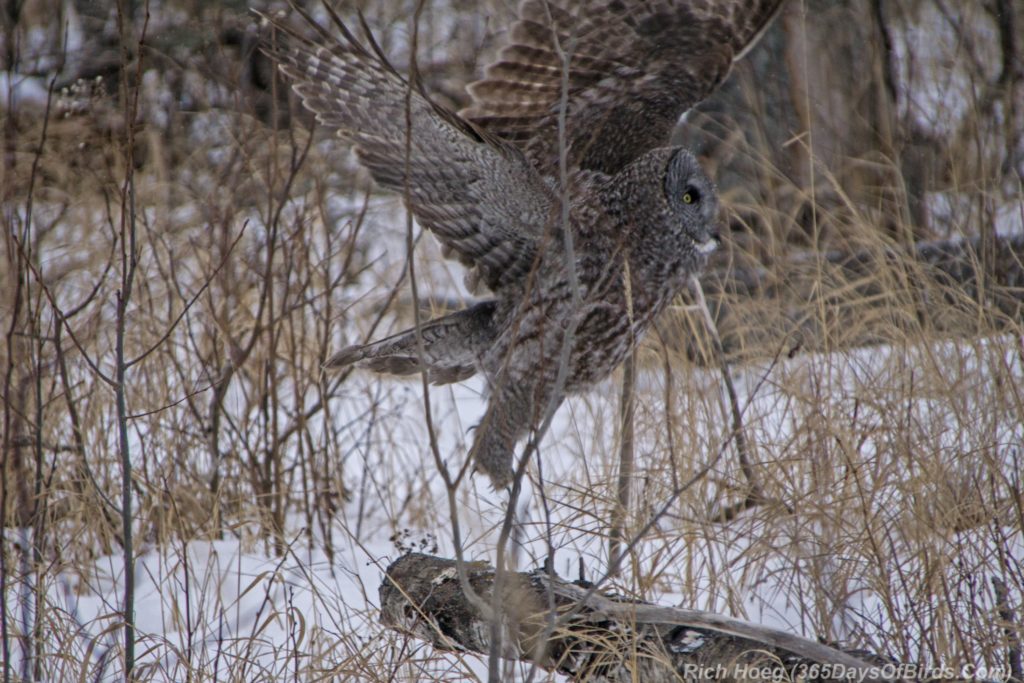
Owl Hunting Photos: Failure #1 – Hmm … the owl did not fly directly at me! Light snow!
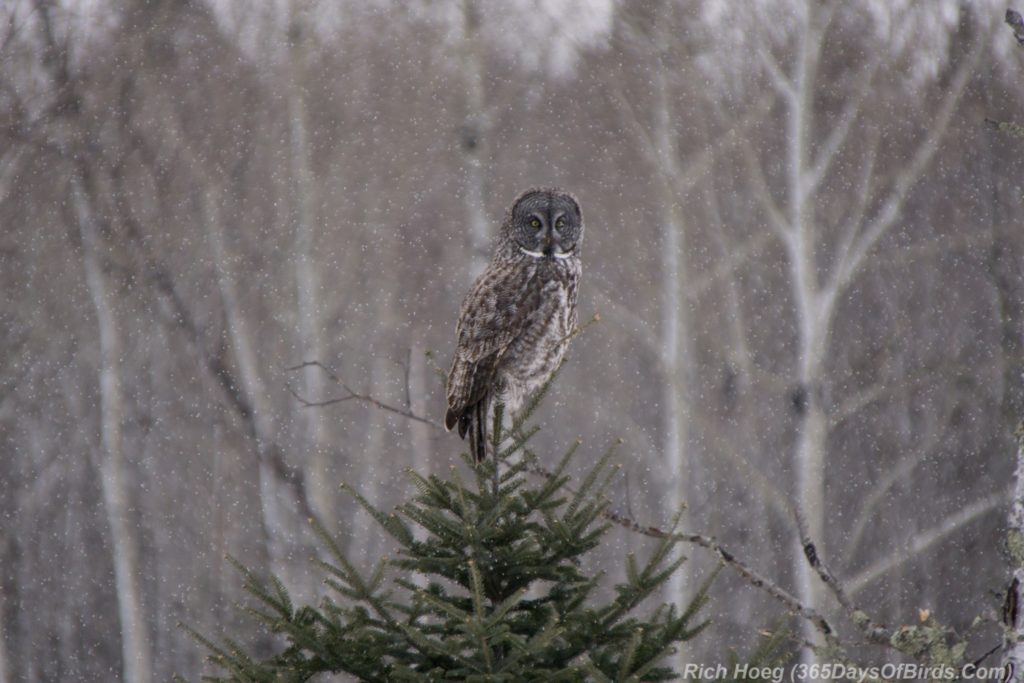
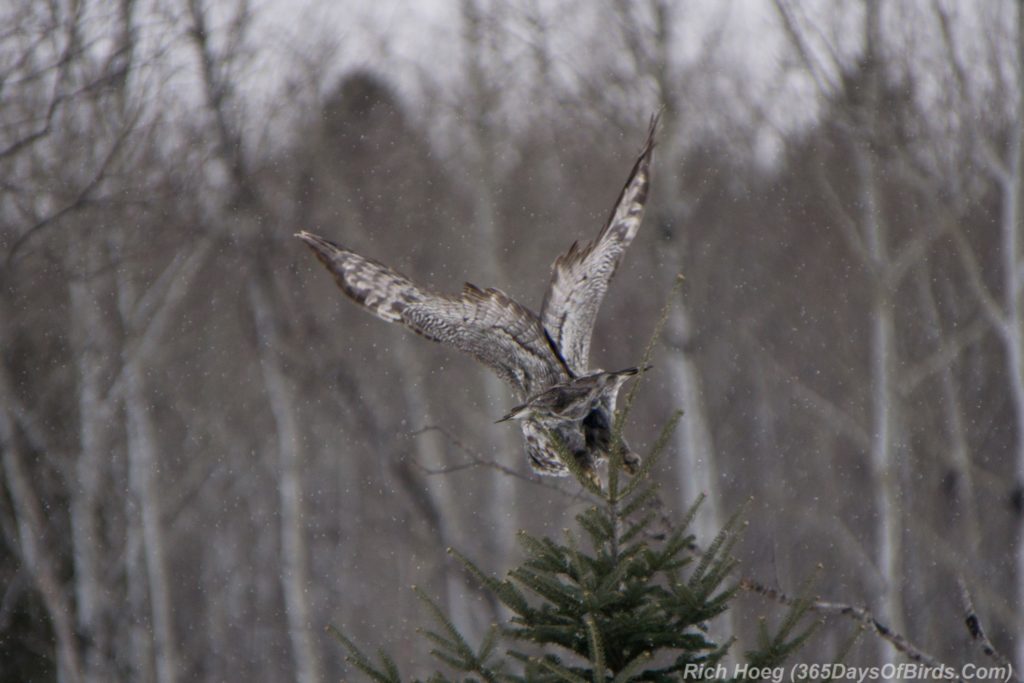
Owl Hunting Photos: Failure #2 – Eh gads… the owl flew away from me again. Not fair!
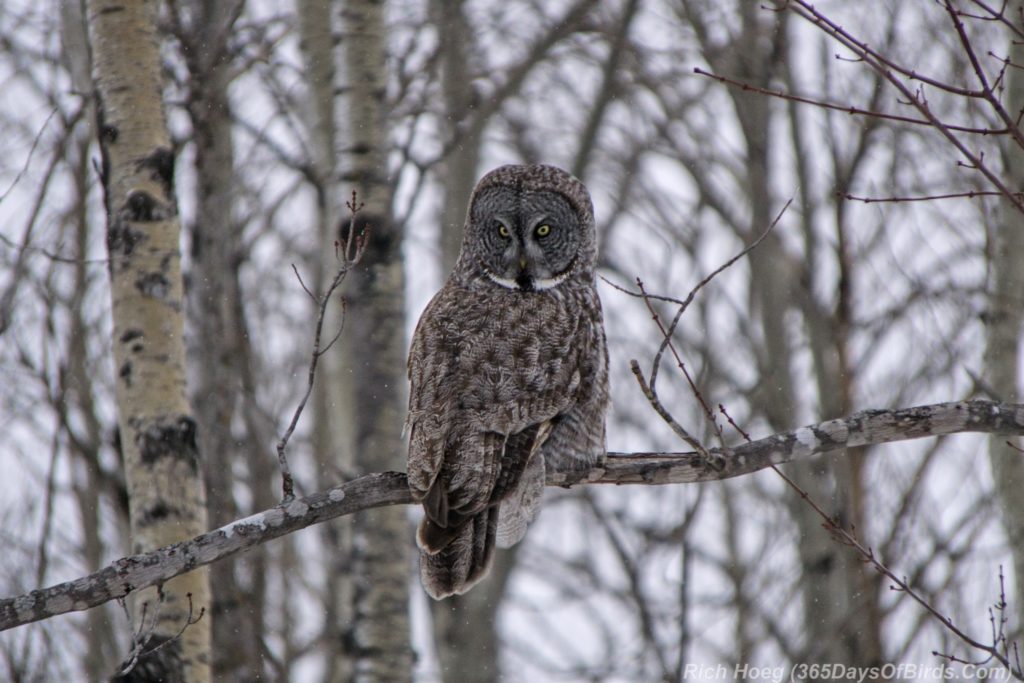
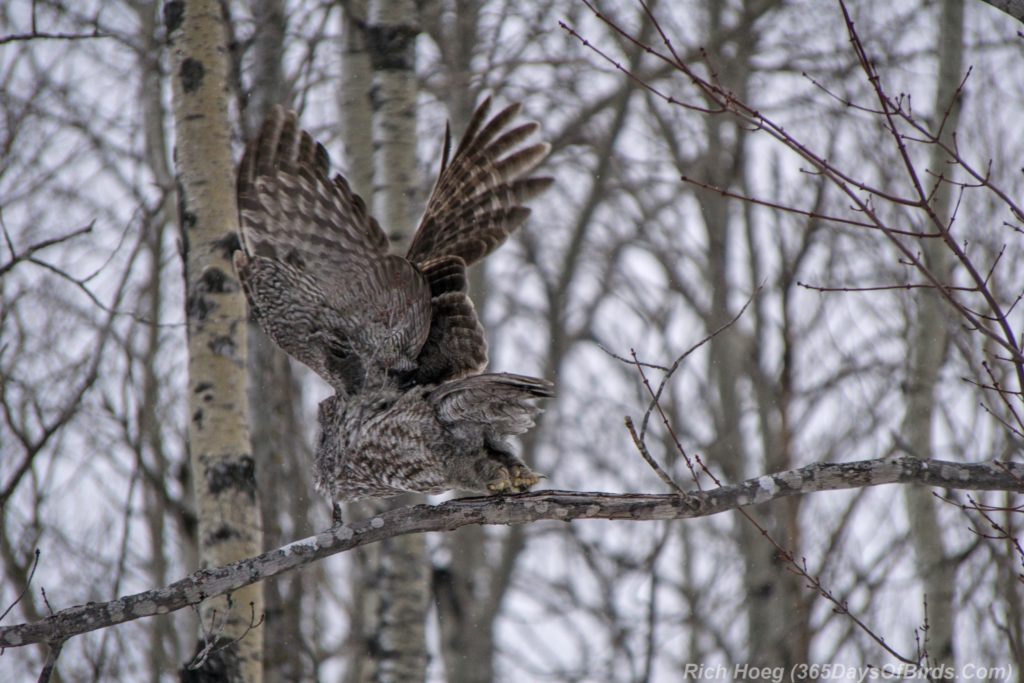
Great Gray Owl Thinking … I’m performing. Why can’t you get one of those perfect hunting images. What kind of photographer are you?!
